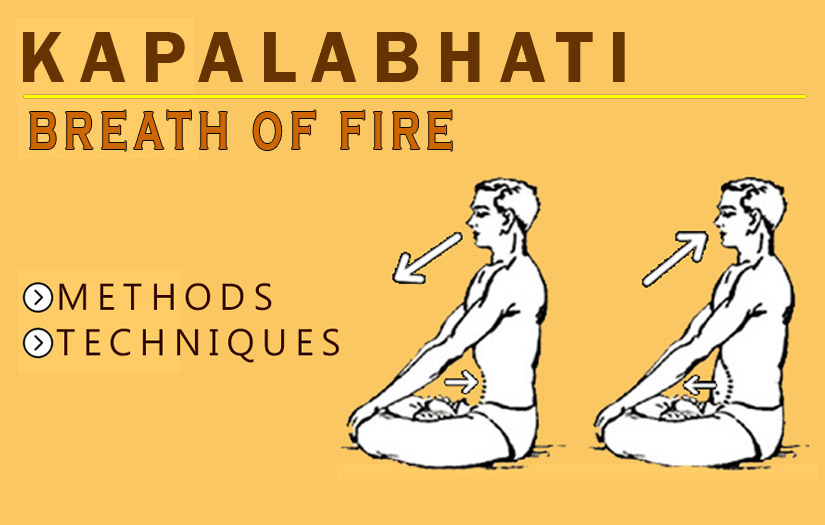
Meaning : Kapala = skull, bhati= shines. It is classified under kriyas as well as in Pranayamas. If breathing of kapalabhati follows retention, we may say kapalabhati is a pranayama.
Kapalabhati involves breathing, which cleans, shines, the kapala, the skull or the brain. The brain cells are stimulated by this Kriya.
In Classical book Hathayoga Pradipika, Kapalabhati is defined as:
The breathing used in Kapalabhati should be from the abdomen mostly, and its focus should not be the chest. The rate of breathing should be increased slowly as stamina increases. In the beginning, one breath in two seconds and then progress to one breath in one second and then to two breath in a second.
Kapalbhati can be practiced before or after asanas or neti and before meditation or concentration. It should be practice at any time on an empty stomach.
If dizziness is felt, stop the practice and relax for some time and then continue the practice with more awareness and less force.
Kapalabhati is Kriya which detoxifies and stimulates all activity throughout the body. We present the effects on major systems of the body briefly.
1. Nervous SystemThe practice of Kapalabhati activates the sympathetic nervous system, but the Sympathetic-Parasympathetic balance is well kept up.
The brain cells are invigorated continuously, and Increased circulation of blood with higher oxygen level increase the functions of the brain cells. Memory and will power increases with the practice of Kapalabhati.
The abdominal muscles are vigorously exercised to bring more blood circulation which increases the digestive power of the person. A person has more nutrient absorption due to improved blood circulation. It also activates and massages the abdominal organs.
3. Circulatory SystemDuring kapalabhati Increased heart rate pumps the blood throughout the system. Blood saturated with the higher concentration of oxygen which activates all the cell activity level. The lethargy of the cells is eliminated due to increased activity and oxygen level.
4. Respiratory SystemDue to the rate of breathing 120 breaths per minute compared to the standard breathing rate of about 15 per minute, there are two effects:
a. Cleaning of carbon dioxide from the lungs and
b. Increased oxygen concentration in the lungs.
The stale air at the end of exhalation is not emptied out during normal breathing. Kapalabhati with its rapid, forceful exhalation gets rid of this stagnated air, helping in the total cleansing of the lungs.
Kapalabhati brings balancing effect on the Glandular system. Both exocrine and endocrine glands get stimulated
6. Therapeutic use of kapalabhatiKapalabhati increases the healing power of the body. As the rate of respiration increases, the prana flow in the body also increases. Prana is the base of all types of healing in the body. Patients with diabetes, obesity, respiratory disorders, constipation, gastritis, hyperacidity, etc., find Kapalabjati incredibly healing.